When it comes to creating a new product or implementing a new feature, you need to test it first. The best way to do so is to check your idea with the appropriate steps. Accordingly, there are various techniques to do so, the main ones being PoC and MVP. In this regard, PoC refers to a proof of concept, and MVP stands for a minimum viable product.
It is essential to look for best practices to make your product from day one. If you are interested in how to build an MVP, take advantage of our in-depth article. There, you will find the keys to success and step-by-step instructions.
Thus, in this piece, we will take a peek at both, outlining the difference between PoC and MVP. For more understanding, we’ll compare them, define the best scenarios where to use each, and see why they are essential in almost any product development.
What is proof of concept (PoC)?
Proof of concept, or PoC, is a small project designed to verify that a particular idea is feasible. Usually, companies develop it for internal proof of concept testing at the earliest stages of product development. Various fields use proof of concept to test their innovations.
The whole aim of a PoC is to show whether it is possible to develop certain functionality in a real-world product. It also indicates the potential obstacles to the product being developed and accepted by users. The final PoC product design should not be flawless, but it presents the concept’s viability before you jump into development.
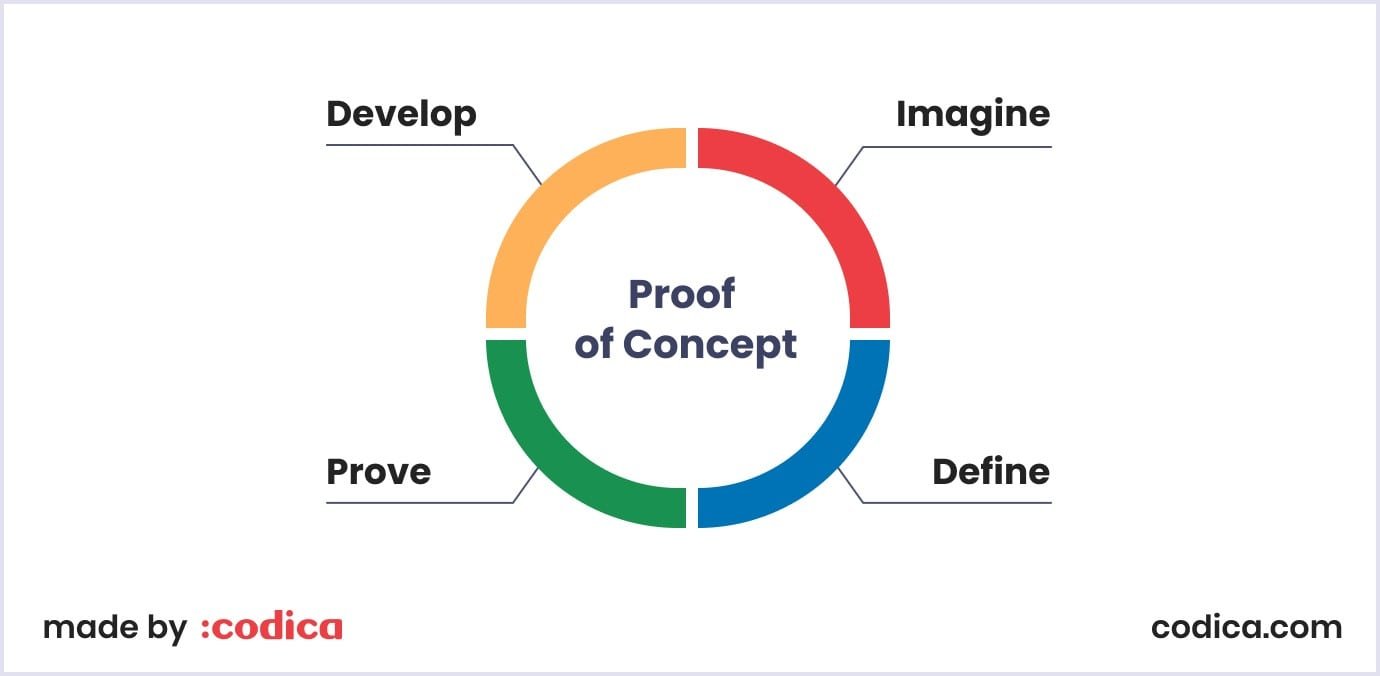
To get a better hold on what problems PoC helps solve, let’s see which questions it answers.
- What problem does the project tackle?
- What is the scope of the project?
- What technologies should be chosen for the project?
- What is the time and budget of the project?
- What is the feedback for the project from stakeholders?
Checking your solution with a proof of concept project helps you understand its value for real people at the earliest stage. Whether for a feature or a product, PoC gives an idea of what technologies, budget, and time you need to develop it. This helps you plan your business strategy for the selected functionality.
How does a proof of concept work?
With the definition and theory covered, let’s move on to the steps required to develop a proof of concept.
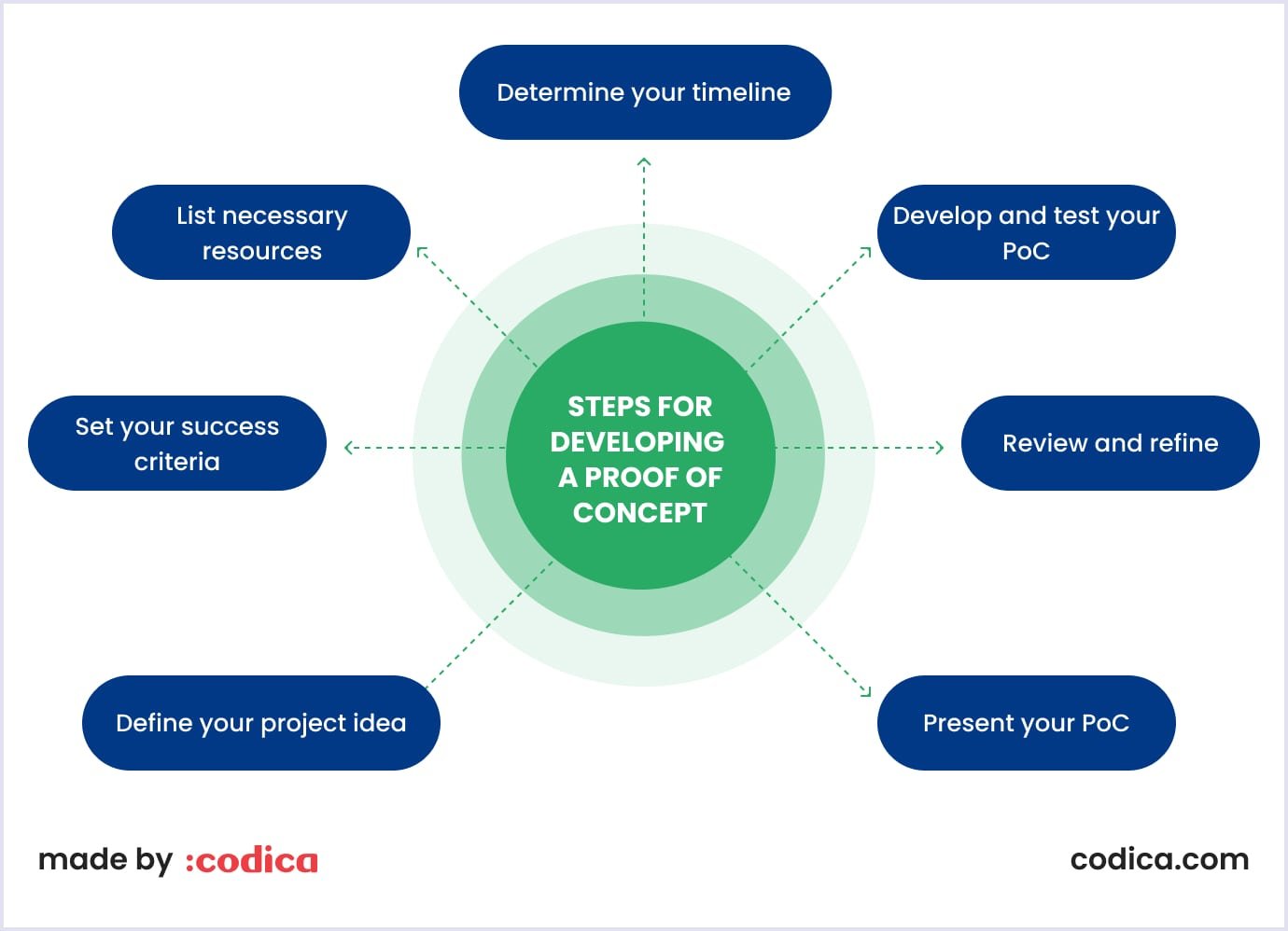
Define your project idea
Begin by identifying your project idea to be tested. Utilize a brainstorming template to generate ideas and a product launch template to articulate the need and market relevance. Address crucial questions we mentioned earlier.
Set your success criteria
Once the project is defined, establish benchmarks to gauge success or failure. If the project involves a client, consult with them to determine their definition of success. Otherwise, conduct research to identify appropriate success criteria.
List necessary resources
Compile a comprehensive list of tangible and intangible resources required for project execution. This includes material goods, technology, tools, and human capital.
Read also: 30+ Tools for Creating MVP for Startups from Scratch in 2024
Determine your timeline
Develop a product roadmap outlining the timeline from ideation to development. Consider factors such as whether the project will have a full-scale launch from the beginning or start small and scale over time. If the latter, specify the speed of scaling. These details provide insights into the project’s pace.
Develop and test your PoC
Upon defining the project scope, create and test it with the target audience. Observe how it addresses their pain points. Involving other teams and stakeholders for fresh perspectives can be beneficial. Collect feedback, both positive and negative.
Review and refine
Evaluate the proof of concept prototype against predefined success criteria after gathering feedback. Conduct a competitive analysis to assess its performance compared to similar solutions. Use this information to enhance areas that fall short of success.
Present your PoC
Present your idea to stakeholders for development approval. Clearly illustrate how the idea works, using visuals and illustrations if necessary. Emphasize how it addresses pain points and fulfills the audience’s needs. If the proof of concept aligns with the success criteria, approval is likely.
Although steps may differ depending on the case, proof of concept works fairly simply.

Features of a proof of concept
A proof of concept is like a test run to check if a concept really works. Let’s break down the key features in simpler terms:
- Clear goals. Know what you want to achieve with your idea. This sets the direction for everything that follows.
- Start small. Instead of going big, focus on a small part of your idea. This helps you test it without using too many resources.
- Build a simple model. Create a basic version of your idea. It does not have to be perfect - just something to show how it could work.
- Check for problems. Think about what might go wrong. Identify challenges and uncertainties early on.
- Be ready to change. It is important to stay flexible. If you find a better way or face a problem, be ready to adjust your plan.
- Look at the data. Gather and study information about how your idea is doing. Use facts to make decisions.
- Watch your budget. Think about how much money you’re spending. Make sure it is worth the investment.
- Write down what you learn. Keep track of what happens during your test. This helps you learn and improve for next time.
By following these essential PoC product components, you can test your idea smartly and be confident that it is ready for the next significant steps.
Read also: Prototype vs MVP: Understanding the Differences
When to choose proof of concept?
Although skipping this stage may seem to save time as it is optional, proof of concept (PoC) is crucial for your product development. It highlights essential aspects of your business idea. Is it possible to implement the intended features? What are the stumbling points? What would the revenue be?
Answering these questions is vital before putting your idea into reality. Hence, there are several scenarios when PoC is just the right tool. Accordingly, choose PoC when:
1. You have to check if your solutions work in real life.
Startup creators often believe that their idea will change this world for the better and solve the target audience’s problem. Proof of concept helps you discover if your idea can be realized. If your theory appears unfeasible, it will be easier for you to find another solution at the PoC stage.
The Bitcoin whitepaper published in 2008 exemplifies how to support an idea at the earliest stage. It is a proof of concept where the author, Satoshi Nakamoto, described an issue and suggested a solution. The document also explains what blockchain is and how Bitcoin benefits society. Thanks to this PoC, there is a field that gives new means of payment and trading.
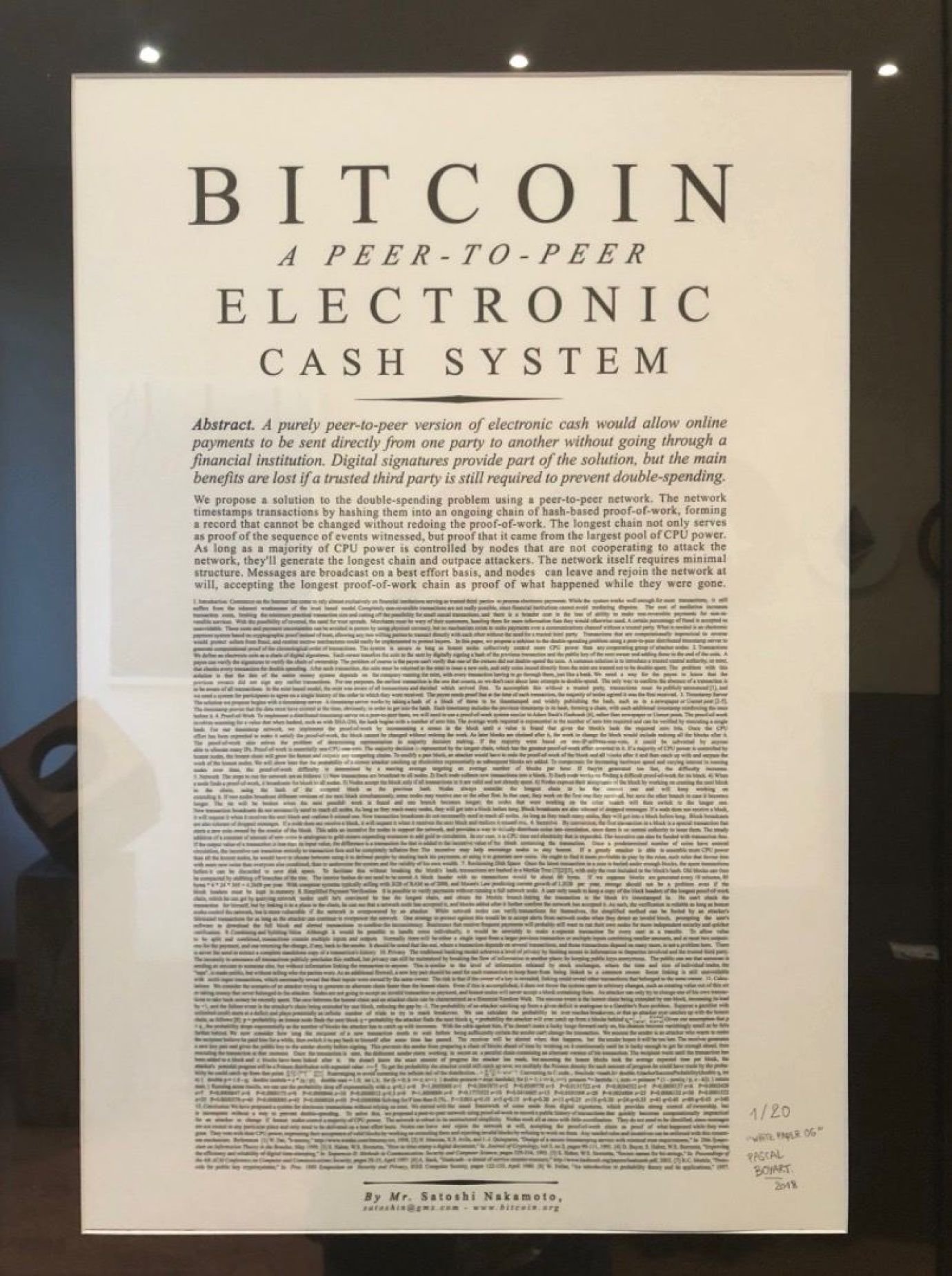
2. You want to bring new value.
PoC helps you differentiate your solution from those of similar providers. For example, let’s say that products similar to what you want to build, like a messaging app, are already successful. So, it would be best to have a proof of concept that shows unique functionality and sets your product apart from similar solutions.
A prominent proof of concept example is the story of Walmart. They faced the problem of disease traceability for the products delivered from different farms. At the outbreak of food-borne disease, it could take a long time to trace its source. They needed a solution that would help trace the origin of products and detect only the farms affected by the disease.
Walmart decided to use blockchain technology to trace the origins of its products. To test their hypothesis, Walmart and their partner IBM launched two proofs of concept. One solution was for tracing mangos in the US stores. Another solution aimed to trace meat sold in Walmart’s stores in China. Both projects worked.
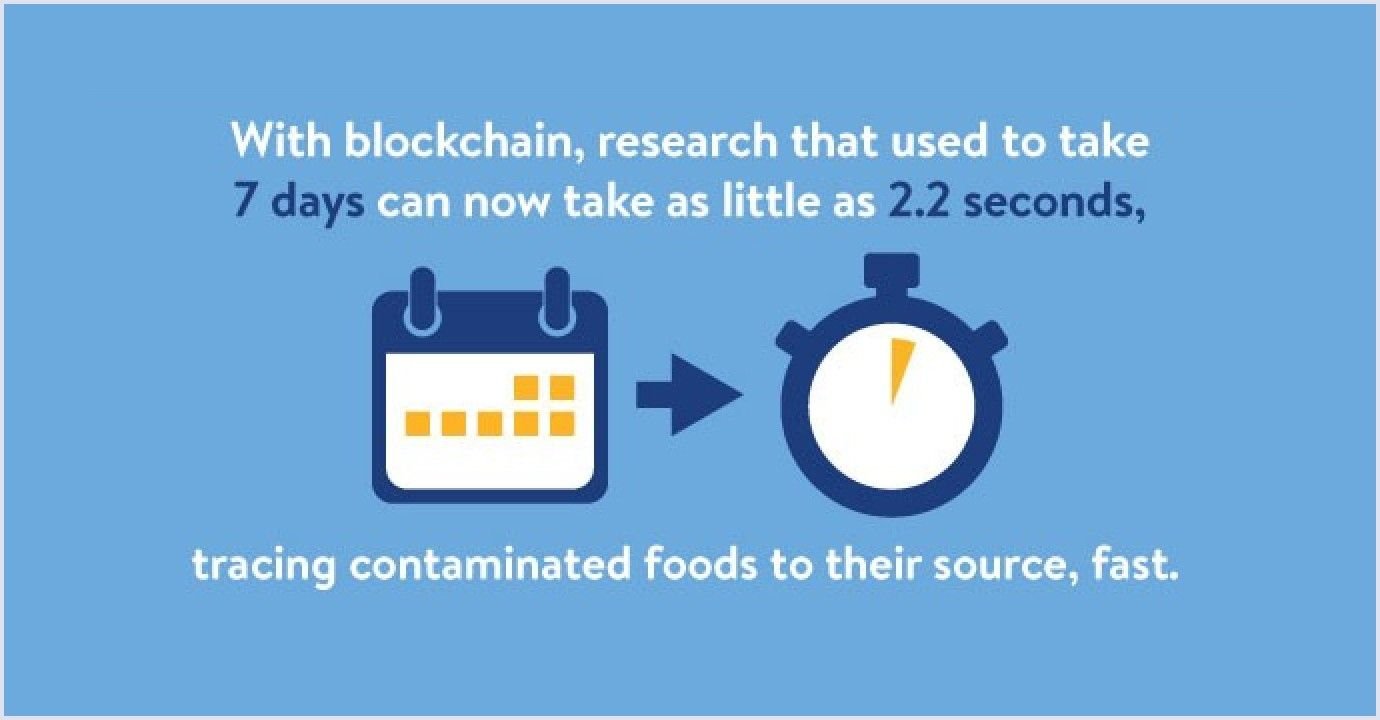
Source: corporate.walmart.com
Today, Walmart implements blockchain technology to track the origin of checked products. The company’s solution reduces the time for tracing product origin to seconds. This improves service and saves people’s lives.
3. You aim to get seed funding.
Before requesting resources, you must prove your project’s worth to potential investors. PoC may include a description of the core meaning of the project and explain that the proposed idea is practical and profitable. All this may help you persuade investors to contribute to the project.
For example, Airbnb started by accommodating people and providing them with an "airbed and breakfast."
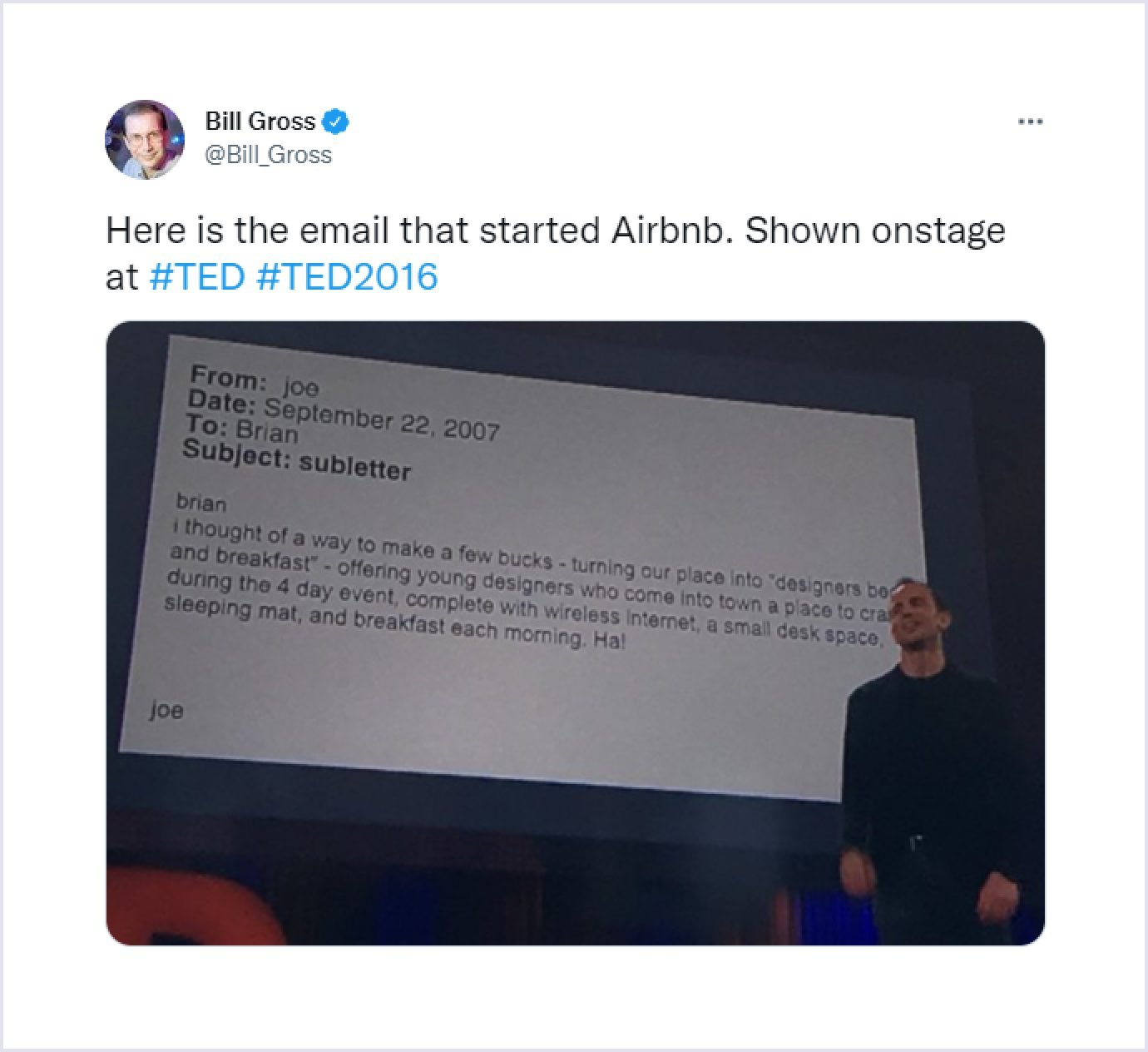
The startup didn’t succeed at once, but the founders were persistent and improved the proof of concept service.
The commitment and an idea of the "world where you belong anywhere" brought the company seed funding of $600,000 from Sequoia Capital. This investment was one of the factors that directed Airbnb to exponential growth.
Read also: 15 Most Inspirational Minimum Viable Product Examples
4. You need to assess risks.
PoC pinpoints potential risks and obstacles when you discover a feature or solution. This is essential for big projects with sizable investments. Proof of concept ensures you don’t exceed the budget and schedule and your features will work properly.

PoC vs MVP
In short, PoC and MVP are similar but not the same. They are used for individual tasks in software development.
What is typical for PoC vs MVP is that they are in the stages of the early launch of a product. They save time, costs, and effort when you implement your solution.
You need proof of concept if you have an idea and want to see if it works in the real world. A minimum viable product is the following stage that helps you to get early adopters’ feedback. Though the two belong to the same process, they bring different conclusions. Let’s see how they relate in the table below.
| PoC | MVP | |
| What is it? | Theoretical proof of idea viability | A basic workable version of a product |
| What do you create it for? | To define the feasibility of the project | To present an early product version to users |
| How long does it take to develop it? | 2 days - 1 week | 3 - 5 months |
| What features should it use? | Description of technologies to be used | Core features, including UX/UI design |
| When should you choose it? | When you want to check scalability, assess risks, define duration, budget, and revenue | When you need to launch early and get feedback from customers |
| How do you test it? | Internally | With target users |
| When do you show it to investors? | Pre-/Seed funding | A/B round |
Conclusion
In the aftermath, any idea in custom software development services requires testing. In this regard, the two options we covered, namely PoC and MVP, can be of great help. All of them allow you to try your theory and get early feedback. But the difference between PoC and MVP is the same as between a draft and an implemented project. With PoC, you test the feasibility of your idea. In comparison, building a minimum viable product means creating a market-ready solution that will bring you feedback from early adopters.
Fortunately, our expertise at Codica allows us to implement ideas in various niches, including creating PoCs and delivering MVP development services. Thus, feel free to contact us to make your dream product, and in the meantime, check out our blog to stay updated on the latest trends in software development, UI/UX design, and more.
